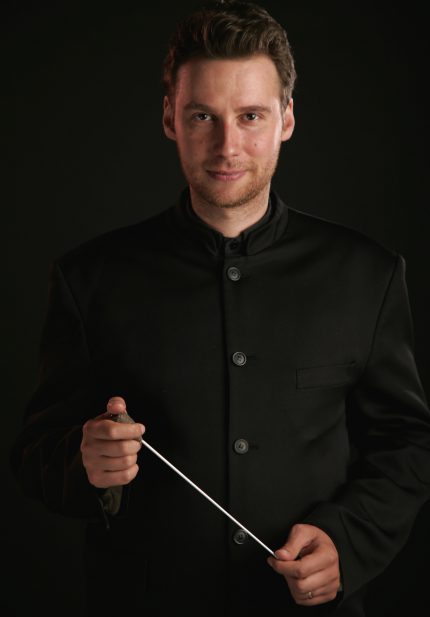Debussy shines brightest in Illinois Philharmonic’s celestial program

The Illinois Philharmonic Orchestra’s program, presented Saturday night, was titled “The World Beyond: Where Music and Nature Meet.” The marketing headline referred to a multimedia collaboration among the orchestra, composer John Estacio, and Emmy-nominated astronomer and visual artist Dr. José Francisco Salgado. Yet despite the attention given to this project, it was the performance of an orchestral warhorse under music director Stilian Kirov that made the biggest impression at Ozinga Chapel in Palos Heights.
Debussy’s La Mer is both one of the most challenging and in some ways most subtle works in the orchestral canon, making it an ambitious programming choice for Kirov in his second year at the helm of the south suburban ensemble. The orchestra impressively rose to the occasion, a testament to the ensemble-building work of former music director David Danzmayr, as well as Kirov’s own honing of the orchestra since his tenure began.
Kirov elicited a wide range of colors in the opening “De l’aude à midi sur la mer,” the movement’s climaxes shimmering as they are intended. “Jeux de vagues” was remarkably agile, the IPO players and Kirov light on their feet and attuned to the intricacies of Debussy’s score. The closing “Dialogue du vent et de la mer” had the requisite guttural impact, though its more gossamer moments were ragged at times. Principal trumpet Matt Lee’s solo contributions deserved plaudits throughout.
Fitful lapses notwithstanding, this was a persuasive and refined reading of a work that can suffer for its overfamiliarity. Kirov clearly trusts his players, who Saturday night amply delivered for their young maestro. The collective ability of the orchestra is beginning to surpass that of some of its individual principals, however, and this will prove a limiting factor on how far the ensemble can advance as a whole.
The headlining collaboration constituted the second half. John Estacio composed the two-movement Borealis in 1997 in response to his first experience viewing the Northern Lights; his Solaris followed in 2000 as a potential overture of sorts to Holst’s The Planets.
For the IPO collaboration, these works were combined into an “Aurora Triptych” (Solaris followed by the two movements of Borealis), for which Dr. Salgado created accompanying films. Saturday night was the premiere of the works in this configuration.
Salgado is the co-founder and executive director of KV 265, a non-profit that according to its mission statement, “Seeks to heighten appreciation and understanding of art, music, science, and technology and to inspire further exploration of these disciplines among its audience members through multimedia concerts, lectures, and educational workshops.” As Salgado remarked during prefatory comments, KV 265 has put on hundreds of concerts reaching over 100,000 people, impressive advocacy for interdisciplinary exploration.
The results Saturday night though were decidedly mixed. The opening music of Solaris is fiery and propulsive, contrasted with a mournful, ethereal middle section. The visuals consisted of NASA shots of solar flares and sunspots, which were themselves interesting, but did not seem closely integrated with the music itself.
The two movements of Borealis (“Borealis” and “Wondrous Light”) were accompanied by images of the Northern Lights, which are truly remarkable to see, but frankly lose their allure over the 20-minute duration of the piece and film, almost leaving the impression of a screen saver. Estacio’s music for Borealis did convincingly capture some of the Lights’ otherworldly glow, and the writing placed considerable demands on the orchestra, which they met in an adept fashion. The overall impression though was less than the sum of its parts.
The program opened with John Williams’ The Mission Theme, the opening bars of which are immediately familiar as the longtime music to NBC Nightly News. It was a pleasant surprise to learn there are more than eight seconds of this music, and the entire work is in Williams’ comely cinematic vein. The IPO strings were impressively unified and sonorous in the expansive main theme.
The IPO’s next concert is “Russian Romantics” on March 16 at 7:30 p.m. The orchestra performs Rachmaninov’s Symphony No. 2 and is joined by pianist William Wolfram for Tchaikovsky’s Piano Concerto No. 2. A world premiere by composer-in-residence Ben Ash rounds out the program. ipomusic.org
Posted in Performances




